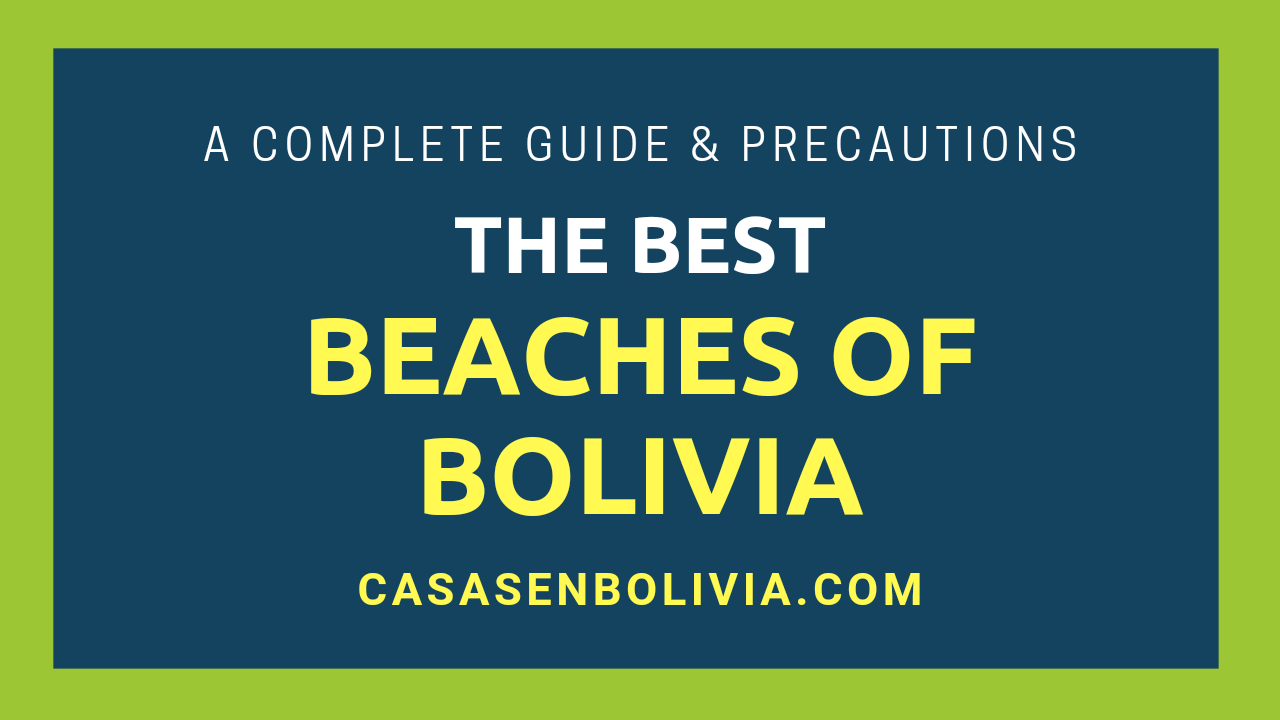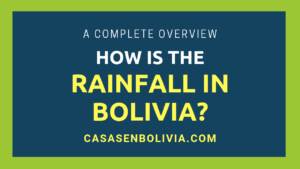Last Updated on February 15, 2025
Bolivia, being a landlocked country in the heart of South America, doesn’t have access to ocean beaches. However, it does offer several appealing river and lake beaches that provide opportunities for typical beach activities. It even boasts beaches on Lake Titicaca, the world’s highest navigable lake.
While Bolivia is landlocked and lacks ocean beaches, it does have both river and lake beaches. The most notable are: 1) Copacabana and Challapampa beaches, both located on Lake Titicaca; 2) the Mamore tropical river beaches; and 3) Lomas De Arena and Pirai beaches, both near Santa Cruz city.
Here, we’ll present the most significant river and lake beaches in Bolivia, including their hidden dangers, how to visit them safely to avoid common and serious threats, what activities you can and cannot do there, and more. You’ll also learn about the abandoned Bolivia Mar beach and the private Turquesa Beach.
Bolivia is a Landlocked Country
Bolivia is currently a landlocked country, a status it has held for over 140 years. In 1879, the country lost its access to the sea during the Pacific War, which involved Chile, Peru, and Bolivia.
Therefore, Bolivia currently has no ocean beaches, *but it does have numerous river and lake beaches* that we’ll explore later. The country also has limited access to a beach donated by Peru, called Bolivia Mar, but it’s currently abandoned and unused.
There are Several Appealing River and Lake Beaches to Visit
Bolivia offers several significant river and lake beaches, and places quite similar to traditional beaches, that you can visit and enjoy:
- Copacabana Beach
- Challapampa Beach
- Mamore River Beaches
- Lomas De Arena Regional Park
- Pirai River Beach
1) Copacabana Beach (on Lake Titicaca)
The town of Copacabana is a well-known tourist destination in Bolivia. It’s situated adjacent to Lake Titicaca, the world’s highest navigable lake, at 12,507 ft (3,812 m) above sea level. Consequently, this town has several beaches along the lake. However, these waters are extremely cold and dangerous for swimming (some people have died of hypothermia after accidentally falling into the lake), and swimming is not permitted.
Instead, most people and tourists enjoy the views and take photographs of the town, the lake, and the boats engaged in transportation, tourism, and fishing activities. The beaches are also used as embarkation points for small boats traveling to both Sun and Moon Islands, which are also popular tourist destinations within the lake.
You won’t be able to sunbathe on Copacabana’s beaches, as there is no infrastructure or security for such activities. Furthermore, there is limited sand, and the environment is not comparable to an ocean beach. The temperatures are also not conducive to sunbathing, as they are quite cold, even during the day.
2) Challapampa Beach (on Sun Island)
There are two islands within Lake Titicaca: Moon Island and Sun Island. Both have archaeological ruins that are popular tourist attractions. One of these islands, Sun Island, *has an isolated beach that is never used for sunbathing or swimming*. It’s called Challapampa Beach.
This beach has plenty of sand, but no one engages in typical beach recreational activities there. People and tourists typically enjoy the landscapes, the lake, and the ruins, and they often travel to the island’s summit for a better view of the area. As mentioned, both the water and air temperatures are so cold that they discourage any activities you might typically enjoy at an ocean beach.
3) Mamore River Beaches
However, there are some appealing river beaches in Bolivia’s tropical and Amazonian regions. The most prominent are the Mamore River beaches. One of these, for example, is Suarez Island beach, in the town of Guayaramerin. Locals from surrounding towns often visit these beaches for swimming and sunbathing. *However, be cautious; they are familiar with the local environment.*
The Mamore beaches, along with any other rural tropical river beaches in Bolivia, are quite dangerous if you visit them alone, without a tourist guide or agency, because you risk:
- Being swept away by the river current.
- Becoming a victim of thieves and robbers.
- Being bitten or injured by leeches, carnivorous fish, or even crocodiles.
- Contracting illnesses commonly found in the polluted waters of these tropical rivers.
Some tourist agencies offer packages to visit these locations and beaches, including swimming opportunities. For example, they offer boat trips on the Mamore River. For swimming, they provide extensive nets that isolate bathers from the river’s dangers, along with other safety measures. Always engage a reputable tourist agency to visit and swim in these tropical river beaches.
4) Lomas De Arena Regional Park
Lomas De Arena *is not technically a lake or river beach*, but it possesses characteristics of a traditional beach and is an interesting tourist destination because:
- It has sand dunes that you can enjoy and play on, and they also offer interesting landscapes.
- It has streams where you can at least partially submerge yourself.
- It’s very close to Santa Cruz city (7.5 miles or 12 km), the largest city in Bolivia, making it easily accessible.
- It’s a well-known tourist destination frequently visited by both local and international tourists.
In this park, you’ll find abundant local flora and fauna, an environmental education center (Centro de Interpretación) where you can learn more about the park and surrounding areas, and rural shelters offering rustic settings to escape the city’s noise.
While you won’t be able to fully swim or sunbathe there, it resembles a beach, and you can enjoy the views, take partial dips in the streams, and play on the sand dunes.
5) Pirai River Beach (Dangerous!)
The Pirai River flows through Santa Cruz City, bordering it to the east, making it easily accessible. *However, in recent times, it has become a haven for thieves, gangs, and drug users*. Consequently, it’s now a dangerous place to visit unless you’re accompanied by a qualified tourist guide.
People still visit this location, *in groups and with precautions*, using their cars or public transportation. They enjoy the sand outside the river, swim in the waters, and engage in other beach activities. Indeed, this location looks and feels like a typical river beach, *but the primary issue is its extreme lack of safety*, as gangs and thieves are constantly on the lookout for victims.
Very close to the beaches of this river, along the sidewalks of the main road leading to it, you’ll find numerous restaurants offering a variety of native dishes from Santa Cruz and Bolivia’s tropical regions, such as Tofori, Pacumutu, Zonzo, Majao, etc.
If you wish to visit this location, always go to the Pirai River with the assistance of a qualified tourist guide who is familiar with the area and its hidden dangers. Never go alone, even if you have your own car; it’s extremely dangerous.
Other Notable Beaches in Bolivia
There are other significant locations to mention as beaches in Bolivia, but they don’t meet all the criteria for a fully enjoyable beach experience. Nevertheless, we’ll present these places below.
Bolivia Mar Beach (Abandoned)
Bolivia, as a landlocked country, is constantly seeking solutions to this limitation. In 1992, Peru agreed to donate a portion of its coastline to Bolivia to partially address this issue. Peru granted Bolivia approximately 3.11 miles (5 km) of coastline for a period of 99 years.
However, ultimately, this coastal beach came with numerous restrictions on Bolivia’s usage. *It was stipulated that it could only be used for tourism purposes*, not for commercial or export activities. Furthermore, to develop a tourist center there, Bolivia would need to invest at least $250 million.
Due to these restrictions and the substantial investment required, this beach was abandoned after its donation. More than 20 years have passed, and this beach remains forgotten, deserted, and isolated. It’s also a very difficult place to access. Do not visit this beach; it’s dangerous, and there’s no one there.
Turquesa Beach in Santa Cruz (Private, Artificial Beach)
This location is currently under construction. It’s situated relatively near Santa Cruz city and will become a private condominium featuring a large private lake beach with all the elements of a typical beach in a tropical region.
Please note that we are not endorsing this location. *We simply believe it’s an interesting place that might appeal to you*, even for purchasing real estate, as its artificial lake, according to its developers, will be the second-largest clear-water lagoon in the world. However, whether this claim will materialize remains to be seen.
This location is also quite far from Santa Cruz. It’s certainly not an ideal place to live, as it lacks the comfort and convenience of an urban area. It’s a plain rural area that, in many cases, lacks even basic services, but it is undergoing development.
If you’re planning to relocate to Santa Cruz or live there, you might consider Turquesa Beach as a recreational or vacation destination. Beach houses there are sold for around $200,000. You can find more details about this condominium on its official website:
Conclusions:
In this overview of Bolivia’s most significant beaches, you’ve learned that the country has been landlocked for over 140 years, since the Pacific War, when it lost its access to the sea to Chile. However, you’ve also seen that Bolivia still possesses some appealing and enjoyable river and lake beaches. It also has an abandoned ocean beach and even a private beach.
Among the main river and lake beaches in Bolivia are: 1) Copacabana Beach; 2) Challapampa Beach, both on Lake Titicaca, where you won’t be able to swim or sunbathe, but can enjoy the landscapes, culture, and ruins. In the tropical part of the country, there are numerous tropical river beaches, the most prominent being: 3) the Mamore River beaches, *which you should always visit with a qualified tourist guide*.
There’s also: 4) the Lomas De Arena Regional Park, which has many features of a real beach, such as sand and streams where you can bathe; and 5) the Pirai River beach, which has unfortunately become a haven for gangs and thieves, and *you must never visit this river and its beaches alone or without a proper tourist guide*, as it’s extremely dangerous.
Finally, you’ve learned that Bolivia currently has an ocean beach, Bolivia Mar, donated by Peru almost 25 years ago, but it remains abandoned due to restrictions limiting its use to tourism and not commercial or export activities. You’ve also discovered that there’s a private beach within a condominium under construction near Santa Cruz city, where a beach house costs around $200,000, but it’s uncertain whether the project will be completed.
We hope this information has been helpful. If you’d like to know the best places to visit in Bolivia, we have an in-depth review of over 50 different tourist destinations, including all their details, main features, and precautions, available here: [Link].
CasasenBolivia.com, information on living, working, investing, and traveling in Bolivia.








